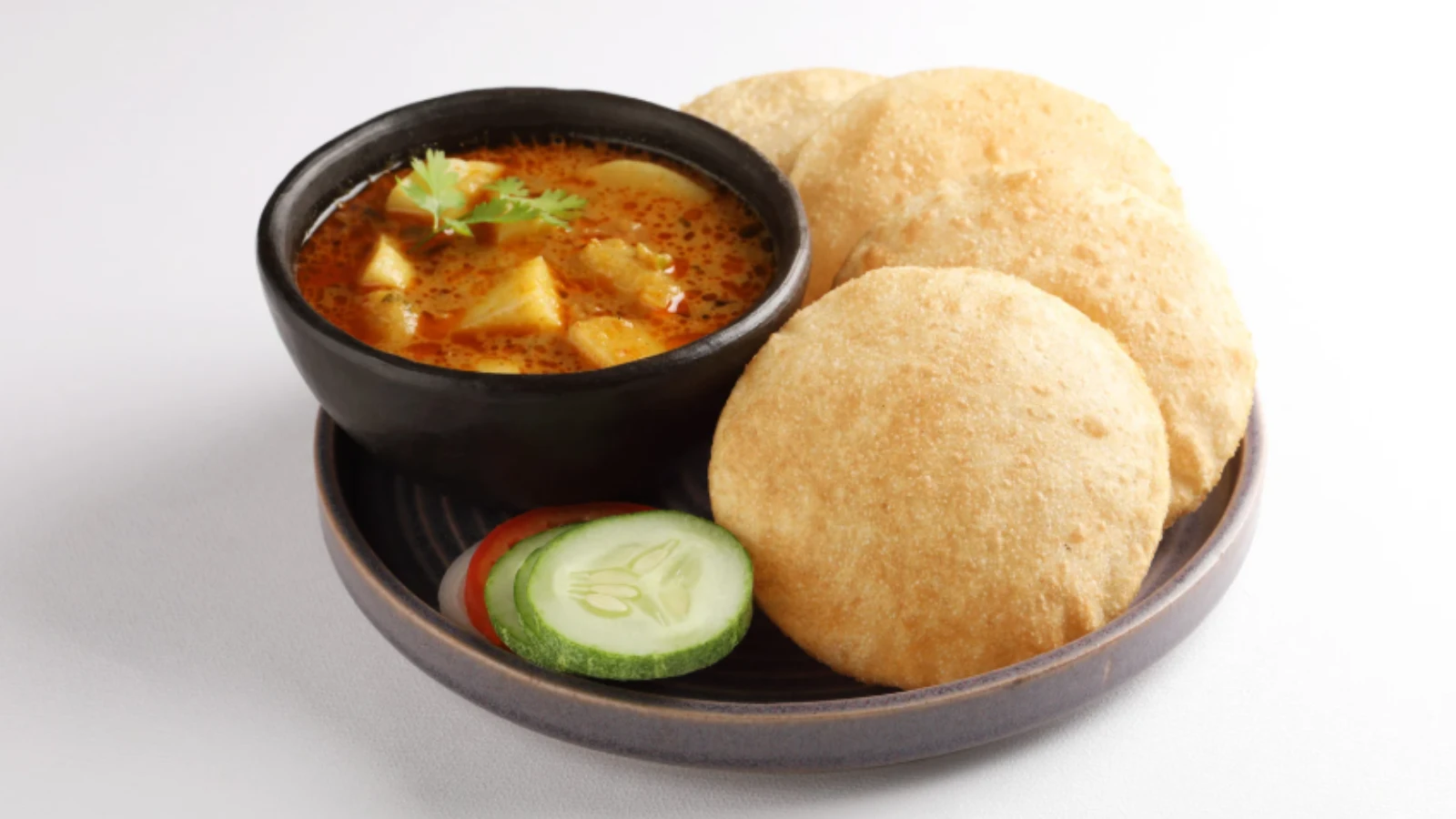Mastering Nutrition in Puris


Puris are beloved staples of Indian cuisine, gracing tables from street-side vendors to family kitchens. These golden, crispy bread rounds pack more nutritional complexity than most people realize. Understanding calories in puri isn't just about counting numbers—it's about making informed choices that align with your health goals. Whether you're managing weight, optimizing nutrition, or simply satisfying curiosity, mastering puri's caloric content empowers smarter eating decisions. Let's dive deep into the nutritional landscape of this iconic Indian bread.
A single medium-sized puri typically contains between 35-45 calories, but this number varies significantly based on preparation methods and ingredients. The puri calorie breakdown reveals that these calories primarily come from carbohydrates and fats, with a smaller protein contribution.
Puri dimensions directly impact caloric content. Small puris (2-inch diameter) contain approximately 25-30 calories each, while larger versions (4-inch diameter) can reach 60-70 calories. Restaurant-style puris often exceed home-prepared versions in both size and calories.
The flour type significantly influences puri nutritional value. Whole wheat puris provide slightly more calories than refined flour versions due to higher fiber and protein content. Added ingredients like semolina, besan, or spices minimally impact overall caloric density but enhance nutritional complexity.
Understanding puri nutrition facts requires examining the complete nutritional profile beyond just calories. A standard medium puri delivers a concentrated package of macronutrients and essential micronutrients.
The puri macronutrients break down as follows:
• Carbohydrates: 6-8 grams (contributing 24-32 calories)
• Fat: 1-2 grams (contributing 9-18 calories)
• Protein: 1-1.5 grams (contributing 4-6 calories)
This distribution makes puris primarily carbohydrate-dense foods with moderate fat content from the frying process.
While puris aren't micronutrient powerhouses, they do contribute some essential nutrients. Puri micronutrients include small amounts of iron, B-vitamins (especially thiamine and niacin), and trace minerals. Whole wheat versions provide slightly higher mineral content compared to refined flour variants.
The puri energy content fluctuates based on several controllable factors. Home cooks can significantly influence the final caloric value through conscious preparation choices.
Proper oil temperature (350-375°F) ensures puris puff quickly with minimal oil absorption. Lower temperatures result in oil-logged puris with 50-60% higher calorie content. This temperature control directly impacts the final puri calorie breakdown.
Whole wheat puris contain approximately 5-8 more calories per piece than refined flour versions. However, they provide superior nutritional density with higher fiber, protein, and mineral content. The puri nutritional composition favors whole wheat for overall health benefits despite slightly higher calories.
While puris aren't traditionally considered health foods, they offer certain nutritional benefits when consumed mindfully. Understanding puri health benefits helps integrate them sensibly into balanced diets.
Puris provide rapid carbohydrate energy, making them suitable for active individuals or pre-workout fuel. The combination of carbohydrates and fats creates satisfying satiety that can prevent overeating when portioned appropriately.
Food satisfaction extends beyond mere nutrition. Puris carry cultural significance and emotional comfort that contributes to overall well-being. Completely eliminating beloved foods often leads to restrictive eating patterns and eventual overconsumption.
Mastering puri dietary information enables smart consumption strategies that honor both health goals and food enjoyment. Several practical approaches help optimize puri's place in nutritious eating patterns.
Limiting puri consumption to 2-3 pieces per meal keeps calories reasonable while allowing satisfying portions. Pairing puris with protein-rich curries and vegetable dishes creates balanced meals that prevent overconsumption of the bread itself.
Baking puris instead of deep-frying reduces calories by approximately 30-40%. While the texture differs from traditional versions, baked puris still provide satisfying crunch and flavor. Using minimal oil spray ensures even browning without excessive fat addition.
Serving puris with fibre-rich vegetables, lean proteins, and legume-based curries creates nutritionally complete meals. These combinations slow digestion, improve satiety, and provide essential nutrients that puris alone cannot deliver.
Understanding calories in common puri pairings helps with meal planning and calorie budgeting. These combinations represent typical consumption patterns across Indian households and restaurants.
A serving of 3 puris with traditional aloo sabzi contains approximately 250-300 calories total. The potato curry contributes roughly 120-150 calories, while the puris add 105-135 calories. This combination provides satisfying carbohydrates but limited protein.
Pairing puris with protein-rich legume dishes creates more balanced nutrition. Three puris with chole contains approximately 350-400 calories, with the legumes contributing significant protein, fibre, and micronutrients that complement the puri's carbohydrate energy.
Answer: Two medium-sized puris contain approximately 70-90 calories total. The exact count depends on size, preparation method, and oil absorption during frying.
Answer: One medium puri contains 35-45 calories on average. Small puris have 25-30 calories, while larger restaurant-style puris can reach 60-70 calories each.
Answer: Five medium puris contain approximately 175-225 calories total. This represents a substantial caloric portion that should be balanced with vegetable and protein dishes.
Answer: One deep-fried puri contains 35-45 calories when properly prepared. Puris fried at incorrect temperatures or in degraded oil may contain 50-60 calories due to excess oil absorption.
Mastering puri calories isn't about elimination—it's about informed integration. Understanding that medium puris contain 35-45 calories each empowers portion control and meal planning. The key lies in preparation methods, portion sizes, and complementary food choices that create nutritionally balanced meals. Modern nutrition doesn't demand perfection; it requires knowledge, balance, and sustainable practices that honor both health goals and cultural food traditions.